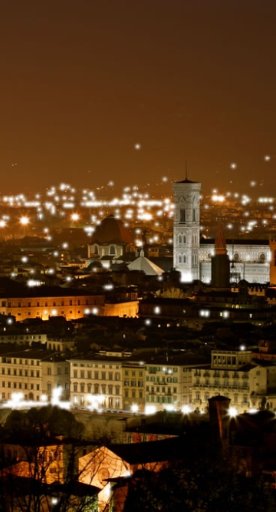

Searching for the Medici between Poggio a Caiano and Carmignano
The territories around Prato, among those preferred by Lorenzo the Magnificent, Francesco I and Grand Duke Ferdinando
The territories of the municipalities of Carmignano and Poggio a Caiano were among those preferred by Lorenzo the Magnificent, Francesco I and Grand Duke Ferdinando, all three of whom loved beautiful country dwellings, nature, hunting and grand garden parties. In 1473/74, Lorenzo the Magnificent (1440-1492) purchased a "lord's house" in Poggio a Caiano on a small hill by the Ombrone torrent and the vast surrounding lands, which were almost uncultivated. Today, the Medici complex of Poggio a Caiano stands on these grounds, consisting of Villa Ambra and its park, the Stables and the Cascine di Tavola.
The other big villa is that of Artimino, known as Villa la Ferdinanda or Villa dei Cento Camini, (Villa of a Hundred Chimneys) commissioned in the late 16th century by Grand Duke Ferdinando I (1549-1609) on the hill of Artimino. The imposing building is located in the center of the Barco Reale, a grandiose hunting reserve that was attended to with great interest by the Grand Duke himself.
Since 2014, both villas have been declared UNESCO World Heritage Sites.
-
1.Poggio a Caiano and its Medicean Villa
-
2.Artimino and Villa La Ferdinanda
Poggio a Caiano and its Medicean Villa

Poggio a Caiano is located on the banks of the River Ombrone, in the middle of the Florence-Prato-Pistoia plain, at a point which serves as a crossroads for the whole area. It owes its fame to the magnificent Medicean Villa Ambra, a UNESCO heritage site and home to the Museum of Still-life Painting since 2007; the villa, perched on its hill, dominates the surrounding plain. Commissioned by Lorenzo the Magnificent and built to the designs of Giuliano da Sangallo between 1484 and 1520, the project transformed the existing structure into a new aristocratic residence, in line with the Renaissance architectural ideas of Leon Battista Alberti, who propounded a new relationship between building and nature. Today the villa is the prototype of the Renaissance villa, with a park, lemon-house and stables, which were renovated in 2000 and are now used as a multi-purpose structure.
The villa was the summer residence of the Medici and the setting of important events in their dynastic history. Here were celebrated the wedding between Alessandro de' Medici and Margherita d'Austria (1536), of Cosimo I and Eleonora da Toledo (1539) and of Francesco I and Bianca Cappello (1579). In the second half of the seventeenth century the villa was equipped with a theatre to satisfy the whims of Margherita Luisa d'Orléans. When the last descendant of the Medici family died, the building became property of the Habsburg-Lorraine.
Outside, the villa has kept its original aspect, designed by Sangallo, except for the two twin staircases by Poccianti which lead to the terrace: these were erected in the early nineteenth century to replace the originals, which were straight and perpendicular to the body of the villa. Inside, there are frescoes by Alessandro Allori, Pontormo, Filippino Lippi and Andrea del Sarto.
Also noteworthy is the arrangement of the cultivated land, showing the innovative genius of the Magnificent and his architects.
Artimino and Villa La Ferdinanda

Dominating the village of Artimino, in the Municipality of Carmignano, is the majestic Medicean Villa La Ferdinanda, also called the Villa of the Hundred Chimneypots. Grand Duke Ferdinand I de’ Medici entrusted its construction to the architect Bernardo Buontalenti. The internal halls are decorated with frescoes by Domenico Cresti, also known as “il Passignano”, and by Bernardo Poccetti. On the ground floor there are the grand-ducal cellars and armouries. The villa is private property and can be visited only by reservation.
The adjoined buildings include the elegant structure of the Paggeria, which today houses a hotel.
Artimino offers many other visiting opportunities. Not far from Villa La Ferdinanda is the parish church of San Leonardo, a typical example of Romanesque architecture, whose foundation is attributed to the Countess Matilde di Canossa.
Furthermore, numerous Etruscan remains to be found, well preserved, in the Archaeological Park in Carmignano, immersed in one of Tuscany’s most beautiful natural areas. The Etruscan Archaeological Museum F. Nicosia collects finds from the whole area, in particular from the Tumulus of Montefortini, from the archaeological area of Pietramarina and from the Necropolis of Prato Rosello.
What’s nearby?
























































